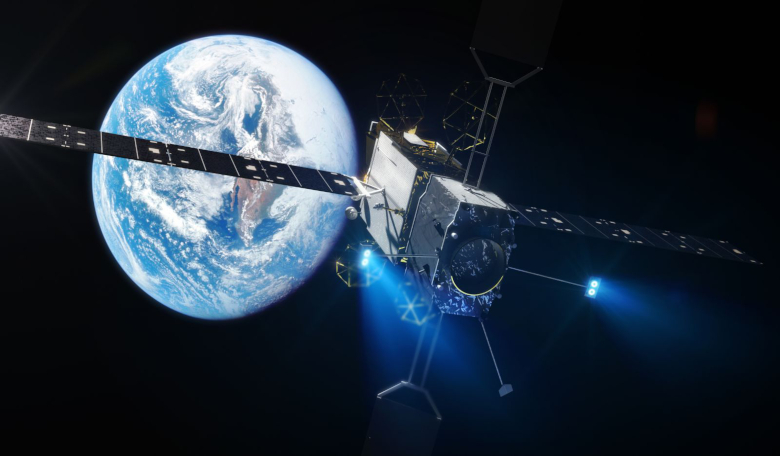As rocket launches go, the lift-off of a 58.2-metre (191-foot-tall) Russian Proton rocket from the Baikonur Cosmodrome in Kazakhstan within the last hour, was not particularly eventful – thankfully – but what was interesting was its payload. Stowed onboard was a pioneering Northrop Grumman-built satellite designed for one purpose - to give ageing spacecraft a new lease of life.
The satellite in question is the Mission Extension Vehicle, or MEV 1, and it is the industry’s first commercial servicing mission. Its target is a 18-year-old Intelsat communications currently orbiting more than 35,000 kilometres (22,000 miles) above Earth, and it's running low on fuel.
The MEV is on a mission to intercept the fuel-hungry satellite and attempt the first-ever docking between two spacecraft near geostationary orbit early next year, so that it can reinvigorate the communications satellite; a life extension service that will cost Intelsat around $13 million per year for the next five years. Sharing a ride to space with the MEV is another Northrop Grumman-built satellite, but this one is destined to provide broadcast services for Eutelsat.
“Once Proton gets us to the to the transfer orbit, they will first deploy the Eutelsat satellite, About 20 minutes later, they’ll deploy the MEV,” said Joe Anderson, vice president of business development and operations at Space Logistics. “And then the MEV will begin its orbit-raising mission. That orbit-raising mission will take us about three to three-and-a-half months to get out to the rendezvous orbit. It takes that long primarily because we’re using mostly electric propulsion to do our orbit-raising.”
While the MEV heads towards its first client, Intelsat controllers will start to raise their satellites altitude by nearly 300 kilometres (200 miles) to the so-called great rust graveyard in the skies, the orbit where geostationary satellites go to die.
The two craft are destined to meet sometime in late January, but the MEV will undergo a little bit of testing first to demonstrate the capabilities of the combined stack.
Before it can go on to dock with the ailing satellite however, the MEV has to perform a tricky corkscrew manoeuvre that relies on the MEV using its visible and infrared cameras, along with a scanning LIDAR sensor so that it can get close to its destination. To be on the safe-side, a rendezvous rehearsal is being planned before the actual docking is carried out.
“At the 80-metre point — we call that a far hold — the MEV will stop at that location, and it will wait for ground command to proceed,” Anderson said.
“At this first waypoint, it waits for a ground command to say you have permission to proceed to the near hold point. So we give it the command to proceed, and it will autonomously go from the 80-meter far hold to the 20-metre (65-foot) near hold point. And then it will stop again at that 20-meter near hold point awaiting ground command to proceed on to the final waypoint, which is about one metre (3.3 feet) behind the client,” Anderson added.
“A ground command will give it permission to proceed on to that one-meter point, to the capture hold point. It will stop at the capture hold point, and then it will wait for ground command to tell it to go ahead and proceed with docking,” he said. “Once it receives that, it will autonomously complete the docking procedure.”
Once linked the MEV 1 spacecraft will take over propulsion and attitude control for the ailing satellite and its xenon-fed, fuel-efficient ion thrusters will nudge the 901 satellite towards a new lower inclination operating post at 27.5 degrees west longitude. Here, the two will stay attached for at least five years, although Intelsat operators have an option to extend the mission by a couple more years if they wish, Anderson said.
“At the end of that five-year period, we will take the IS-901 satellite back to the graveyard orbit and undock from it there,” he said. “And then the MEV will move on and go to its next customer. The MEV is a multiple use spacecraft, and it will serve multiple clients during its lifetime.”
A second Mission Extension Vehicle, set for launch in 2020, is also planned. This spacecraft will launch on top of an Ariane 5 rocket and it is also being geared up to service another ageing Intelsat communications satellite in geostationary orbit.











